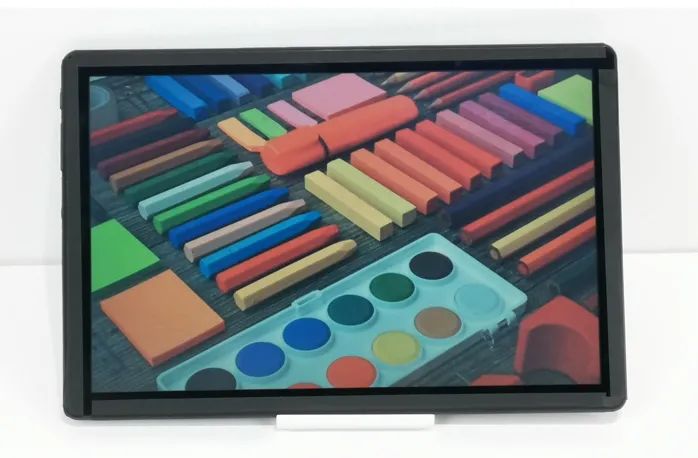In recent years, eye-friendly displays have been favored by the market. The excerpt from Wang Xizhi's Lantingji Xu, full of the fragrance of books, seems to spill off the screen—this image is played on a tablet using the more eye-friendly "transflective" LCD display technology. Compared with conventional LCD tablets on the market, the image on a transflective LCD monitor appears more natural and softer, making it more friendly for human eyes to read.

Liquid crystal display technology is divided into two technical routes: "transmissive LCD display" (hereinafter referred to as "transmissive") and "transflective LCD monitor" (hereinafter referred to as "transflective").
"Transmissive" is the commonly seen LCD display, which relies on an LED backlight to emit light and passes through the liquid crystal cell to form images.
In contrast, the "transflective" type does not require a backlight, but instead reflects ambient light, and the liquid crystal cell modulates this reflected light to form images.
Specifically, the "transflective" type does not have an LED backlight. Its imaging principle is similar to reading a paper book. When reading, white paper reflects ambient light into the human eye, while black text absorbs most of the light. The contrast between the two creates the effect of "black text on white paper." For the "transflective" type, ambient light is first modulated by the liquid crystal cell and then projected onto a metallic reflective layer inside the screen. The reflected light is then modulated again by the liquid crystal cell and forms an image that is projected onto the viewer’s retina to generate visual perception. Therefore, users can comfortably view "transflective" products just like reading a book. In contrast, transmissive products contain strong high-energy blue light in their LED backlight, which is more likely to cause harm to the eyes.
In addition to transflective LCD monitors, other display devices that rely on ambient light to form images include electronic paper (EPD). However, transflective LCD monitors can play videos smoothly and support full-color display—two major features that electronic paper cannot match.
Firstly, the response time of a transflective LCD monitor is less than 15 milliseconds, allowing for a refresh rate of 60Hz or even higher, providing smooth and clear video playback. Due to its display principle, electronic paper experiences severe stuttering and trailing effects when playing videos, which seriously affects the viewing experience.
Secondly, transflective LCD monitors are capable of full-color display. Although electronic paper can achieve color rendering by adding color filters, color particles, or dyes, its 32,768 colors are far fewer than the 16,777,216 colors supported by transflective LCD monitors.

With the three key features of being eye-friendly, having millisecond-level response speed, and full-color display, transflective LCD monitors have a clear advantage in the field of eye-protection displays and can improve users' visual environments. BOE has currently innovatively developed 10.5-inch WXGA, 32-inch FHD, and 43-inch FHD transflective LCD monitor modules, which can be applied to devices such as digital schoolbags and outdoor commercial displays, allowing users to enjoy an eye-friendly experience without changing their usage habits.